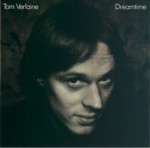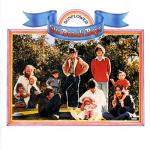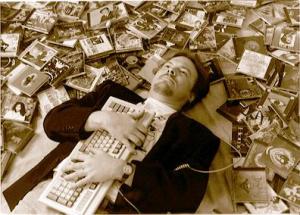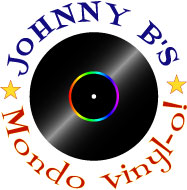 Time once more for the iPod Shuffle, in which I hit the appropriate button on my l’il ol’ iPod Nano and write down the first twelve songs that come up, then post them here with pertinent commentary. Here’s what came up just now:
Time once more for the iPod Shuffle, in which I hit the appropriate button on my l’il ol’ iPod Nano and write down the first twelve songs that come up, then post them here with pertinent commentary. Here’s what came up just now:
1. Our Song- Joe Henry from Civilians
Joe’s Trampoline album is one of my favorite releases from the last 20 years; I can’t recommend it highly enough. However, subsequent album have seen him slowly descend into a sort of turgid jazz-pop hell, full of songs just dripping with echo-laden atmosphere but missing important things like melody and beat and inspired lyrical content. But Civilians, his most recent to date, is a step back from the abyss; Henry writes actual, honest to goodness melodies, and even deigns to speed the tempo up a bit rather than plod, almost as if he’s suddenly interested in making accessible music again rather than experiments in tone and mood. “Our Song” is certainly one of the best track on the album- a heartfelt and resonant musing on days gone by, but there’s enough wit in the lyric to keep it from being a pandering exercise in nostalgia for nostalgia’s sake. True, it does have that plodding tempo that (I swear) Henry doesn’t use throughout the album, but the melody is strong enough to maintain the listener’s interest. Here’s Henry, in his own words, about this cut.
2. Widow’s Walk- Van Dyke Parks from Song Cycle
Song Cycle is an album that took me years to finally listen to, although I do admire the loopy gifts of the Maestro Mr. Parks very much, especially his efforts as arranger and/or lyricist on other people’s work. His own albums, though, I’ve always found inconsistent, even though they all have their moments. Song Cycle was critically lauded, but a sales disaster so it didn’t stay in print very long, certainly not long enough for me to find without a great deal of trouble when I started collecting in the 70’s, and I never ran across a used copy, so it has gone unheard by me until just recently…and I find it as up-and-down as I do the others I’ve heard. “Widow’s” is a vaguely nostalgic, baroquely arranged, minstrel-sy kind of tuneless tune, if minstrel shows has synthesizers, accordions and mandolins instead of banjos; almost a recitation. It’s more interesting as an abstract thing, an idea, rather than as a song. It’s not one of my favorite cuts on this album. That’s the way it goes on shuffle setting sometimes!
3. Dreams- Joe Walsh from The Smoker You Drink, the Player You Get
When people think of Joe Walsh, if they think of him at all these days (in any context other than the guitar player in the Eagles), they think of “Rocky Mountain Way” and “Funk #49”-style funky hard rock guitar riffing, or to a lesser extent goofy, rubber-faced mugging- but one of the reasons he left the James Gang in the first place was to expand his musical horizons a bit; do quiet, jazzy tracks or big, orchestrated ballads if he chose to and not catch crap from his bandmates…and his first handful of solo albums are laced with examples of this. This cut is one of them- it starts out with a quiet, shuffling rhythm, punctuated by Steely Dan-style keyboard figures and vibes, but then launches into a rock-guitar accompanied chorus of sorts (“…she makes me feel fine, keeps me in line…”), before returning back to the jazz. It’s actually quite melodic, and a very enjoyable track, even though the lyrics ramble from one thing to another and don’t really make much sense- it seems to be alternately a love song, a call to help your fellow man, and an ode to the art of taking it easy. Oh well, nobody expects Dylan from Joe effin’ Walsh anyway. I’ve actually become quite the fan of Joe’s early-mid 70’s output since I’ve grown up and become a theoretical adult; didn’t have much use for it at the time. Then again, I didn’t hear tracks like this one or “Days Gone By” from this album, either- all I ever heard was “Rocky Mountain Way” (the live version) and “Life’s Been Good”.
The Smoker You Drink, The Player You Get
4. For Emily (Wherever I May Find Her)- Simon and Garfunkel from Simon and Garfunkel’s Greatest Hits
A live version of the Parsley, Sage Rosemary and Thyme track which takes full advantage of Art Garfunkel’s choirboy tenor in service of Simon’s somewhat pretentious lyrics. It’s a lovely tune, from an album (S&G’s Greatest Hits, that is) I used to listen to a LOT as a teen.
Simon & Garfunkel – Greatest Hits
5. Walkin’ With a Mountain- Mott The Hoople from Mad Shadows
From Mott’s second Atlantic album, a couple of years before they hooked up with Bowie and became rockstars for a too-short time. Basically a rock-out-with-your-cock-out Chuck Berry-style rocker, and a concert favorite which they performed live until they broke up in 1975. Those Atlantic Mott albums always suffered, in my opinion, from a murky, muffled, shabby sound, and perhaps the best thing Bowie did for them (besides give them “All the Young Dudes”, of course) was open up their sound so people could hear them play.
6. Silent Nocturne- the dB’s and Friends from Christmas Time Again
Apparently a couple of years ago the Chris Stamey Band recorded a Christmas album. Then, a year or two later, it was rereleased with extra tracks by Whiskeytown, Marshall Crenshaw, Pete Holsapple, and a bunch of others. Of course I didn’t know anything about it until someone mentioned it on Twitter the other day. This is a lovely solo acoustic rendition of “Silent Night”- I don’t know who’s playing, though. I will assume Holsapple unless otherwise corrected.
7. Anonymous Proposition- Tim Buckley from Lorca
Lorca was Buckley’s first real attempt to escape from the narrow folkie-singer/songwriter bag, writing songs with standard verse/verse/chorus/verse structures, that he felt that he’d been trapped in; he’d been listening to a lot of Miles and other experimental musicians, and wanted to expand his musical horizons. This is a long track, almost eight minutes, and is mostly Buckley crooning come-hither lyrics and long, held-out notes to someone, as guitar and upright bass noodle along behind. Reminds me somewhat of Pentangle, perhaps, especially because of the Danny Thompson-style bass playing of John Balkin, or King Crimson circa Islands, no kiddin’. While this is not a song I’d want to listen to at a party or driving down the highway with the top down, it is a very effective quiet-time, early-morning reflective piece and as such is quite listenable.
8. A Lucky Guy- Rickie Lee Jones from Pirates
One of many beautiful tracks from Jones’ underrated album, and one of the more straightforward, both in subject matter and arrangement; it has a laid back, basic sort of jazz shuffle rhythm, and instrumentation is simple brush drum, upright bass, felt-barely-heard guitar, and piano, along with some wonderful group chorus vocals. Wikipedia says that its snippy lyric is directed at then-boyfriend Tom Waits; I can hear that, sure.
9. Ride ’em Cowboy- Sparks from L’il Beethoven
A musing on the need for persistence in order to achieve your goals in the face of the vagaries of public opinion as only the Mael Bros. can, with a typically heavy dose of the wry and a repetitive, classically-themed arrangement. I’m amazed the Bros. have hung in there as long as they have, making smart, sharp, excellent music in a world which you’d think would be totally indifferent to their charms.
10. Which Will- Nick Drake from Pink Moon
I’m sure the majority of you reading this know the frustratingly sad story of the doomed bard of Tanworth-in-Arden, so I’ll spare you the details and merely direct you here and here. This track is from his third and final album, at least the final one to see release while he was still alive, and it’s as spare and bleak as the majority of the songs on that release tend to be, only Drake’s intimate, hushed voice and acoustic guitar, with a neat little hammer-note riff at the base of the song. At least I think that’s what you call it. Anyway, a look at the lyrics reveals, at least as I see it, that he was more than a little frustrated and hurt himself by the lack of acceptance of his art. Pink Moon isn’t always an easy listen; Drake sounds haunted and forlorn on much of it, but it does cast a beautiful, serene sort of spell, if you’re in the right frame of mind.
11. Smile- Laura Nyro from Smile
As with Buckley, I’m a fairly recent convert to the music of Ms. Nyro; for decades, I went along with knowing of her hit songs she wrote that were covered by the likes of Blood, Sweat and Tears, Three Dog Night and most famously the Fifth Dimension…but eventually I broke down and picked up the 2-CD collection that Epic put out a few years ago. The most immediate thing I noticed was how much of an influence she must have been on so many singers- Wendy Waldman comes to mind (It’s amazing how much WW sounds like Nyro sometimes, and bear in mind that heard Waldman WAY before I heard Nyro), also Rickie Lee Jones (see above). Unfortunately, I also noticed that I liked the earlier stuff better, the songs I was already familiar with through other artists such as “Stoned Soul Picnic” and “Wedding Bell Blues”…her later, more personal work, at least as represented on the twofer, sounded unfocused, self-indulgent, and tuneless, much to my dismay and consternation. However, I liked some of it enough to still be curious, and eventually I ran across a copy of Smile, a 1976 comeback album of sorts for her…and lo and behold, I liked it a lot- it was breezy, melodic and a bit jazzy, Joni-style; experimental in places, sometimes featuring Japanese instrumentation, but not to the detriment of the song. Even the tracks which I had somehow overlooked on the collection sounded better in a different context. This, the title cut, features what sounds like a koto at various points throughout and sways along with a vaguely funky-jazzy rhythm until about halfway through, when the tempo stops and plucked upright bass and koto and flute play us out till the end. I’m not always fond of this schizo of an approach to song structure, but it works OK here.
Stoned Soul Picnic: The Best of Laura Nyro
Smile
12. Back to the Land- Black Oak Arkansas from High on the Hog
Oh, chillen, back in the day we had this thing called Southern Rock, a down-home countrified version of the recycled blues that the English fellers like Pete Green and Eric Clapton were playing. On the one end of the spectrum, we had the Allman Brothers, and on the other, a thousand nondescript practitioners, mostly on Capricorn Records, like Hydra. Somewhere in between was Black Oak, led by energetic and lecherous frontman Jim “Dandy” Mangrum and his braying Foghorn Leghorn-meets-Jani Lane schtick- they weren’t players on the same level as the Allmans or the Skynyrds, but they could provide an agreeable chugging boogie when necessary. Hog was by far their most successful record, the culmination of a good five or six years of touring and not-bad boogie releases with titles such as If An Angel Came to See You, Would You Make Her Feel At Home?. The reason for this success was the huge hit single “Jim Dandy”, a cover of an old blues tune most notably performed by LaVern Baker, and even though there were no other hits there were some decent cuts, such as this one, a change-of-pace bluegrass-style song about a good ol’ boy, nostalgic for the old homestead. While I like the other change-of-pace track from this one, “High ‘n Dry”, a lot more, this is still agreeable stuff.
Thanks for making it this far, and just a reminder- click on the links after each review to go to Amazon.com, and if you’re moved to buy, then I get a little cut! Ain’t that cool? Anyway, I’ll be back with another episode next week.







Recent Comments